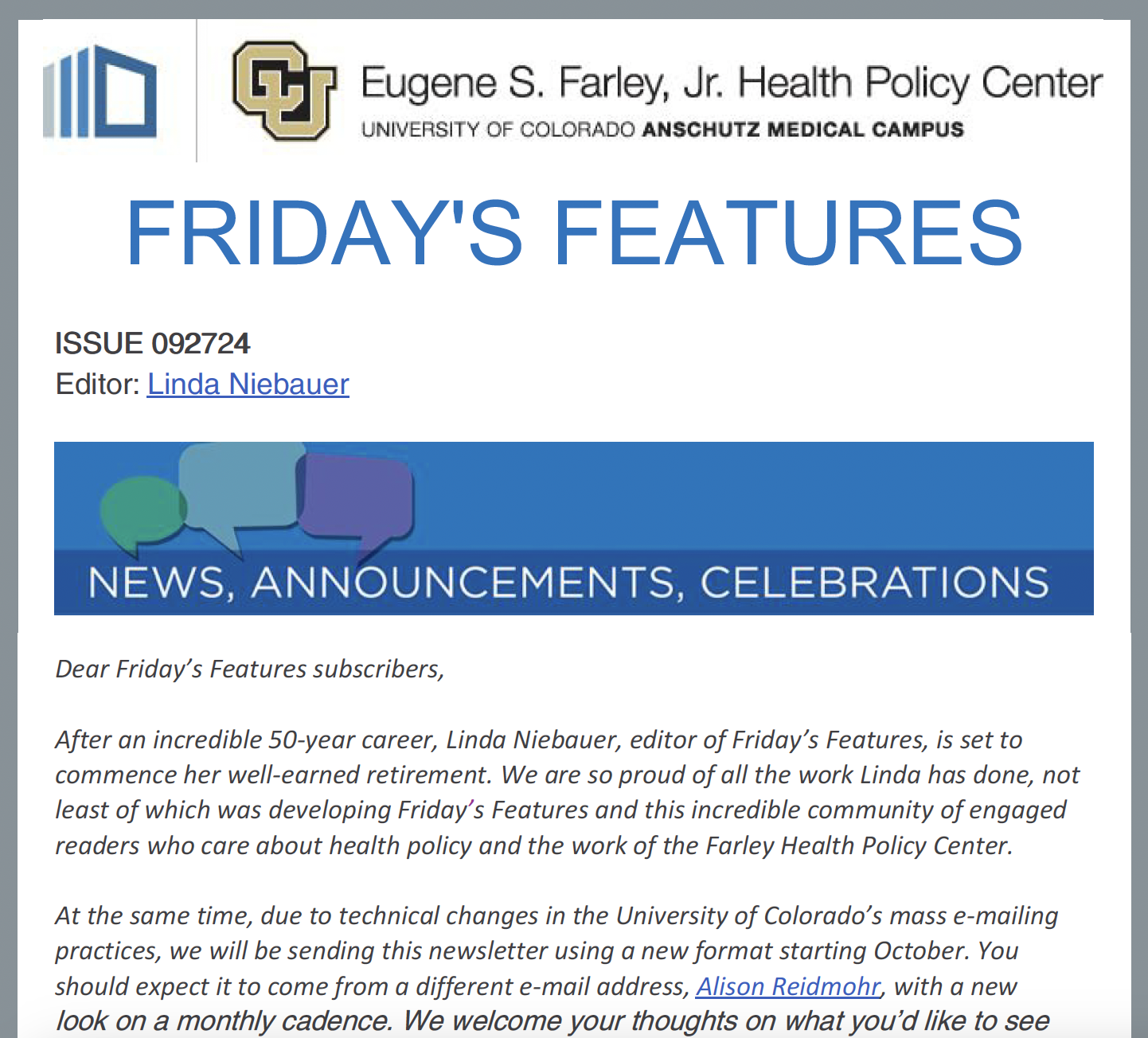Farley's Features
Welcome to Farley’s Features, a monthly newsletter from the Farley Health Policy Center focusing on key issues in the health policy space that span primary care, behavioral health, and public health practice.
Farley's Features
Friday’s Features is a weekly letter that curates recent information about health and healthcare policy issues; and is written particularly for those interested in behavioral, primary care, prevention, and population health. It exposes a timely mix of news media, peer-reviewed publications, commentary, and reports that assemble evidence for decision-makers.

